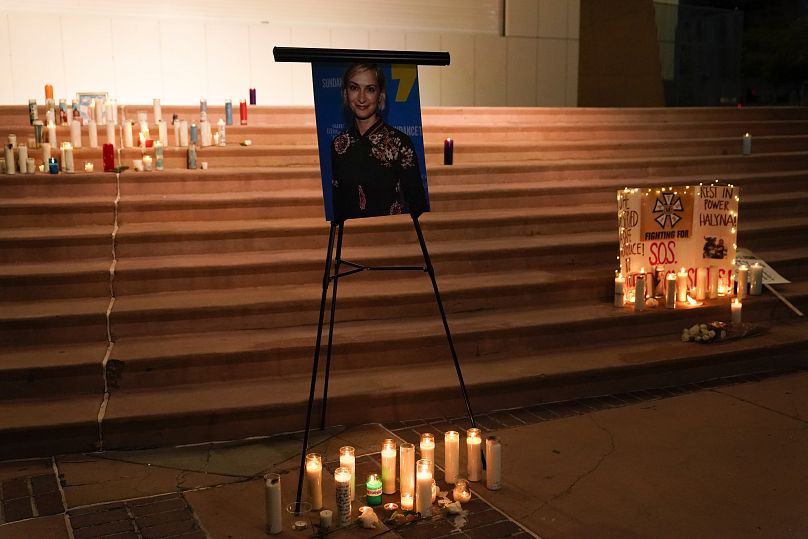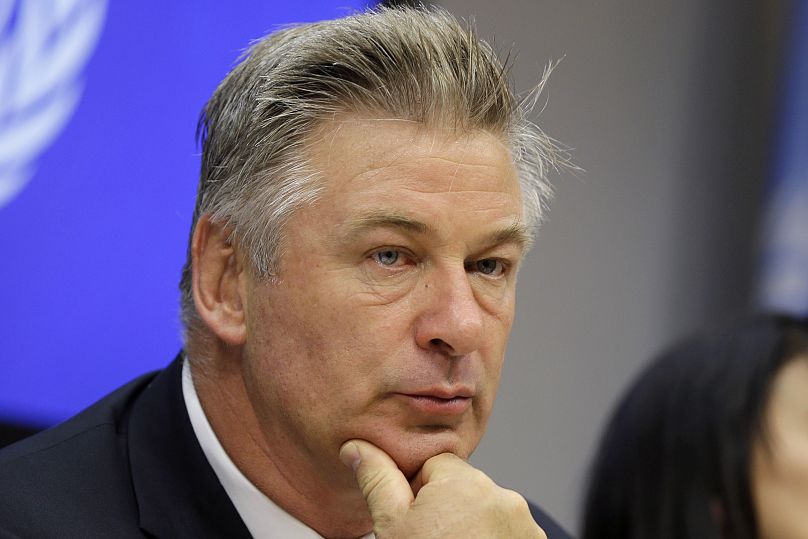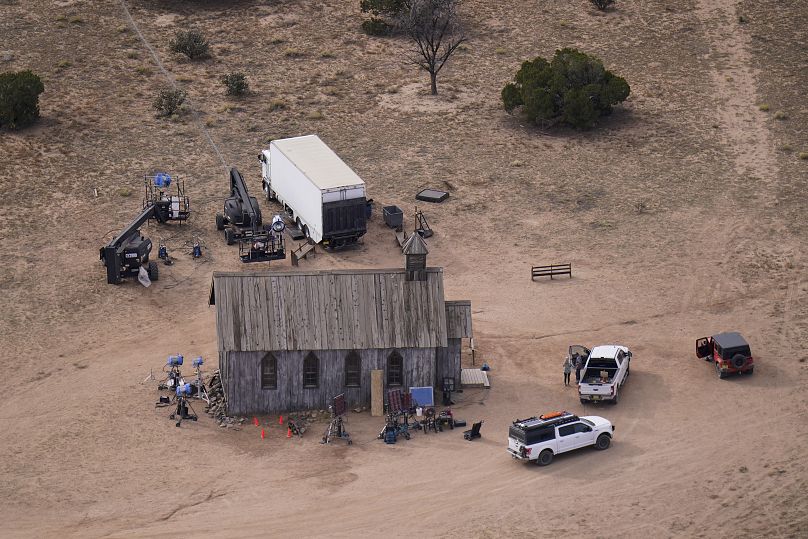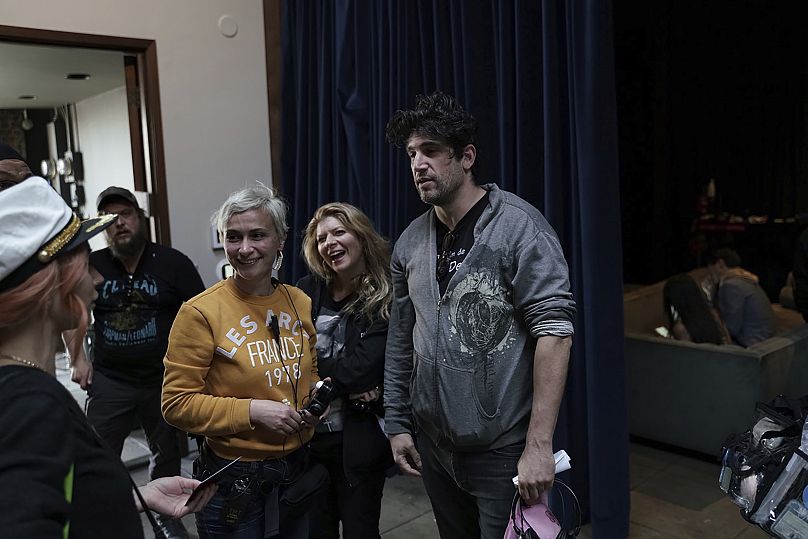Exploring the structures in place on film and television sets that keep cast and crew are safe in the wake of Halyna Hutchins' passing on the set of Rust.
The film industry remains in a state of shock following the events of last Thursday, when actor Alec Baldwin fired a loaded weapon on a film set that resulted in the killing of cinematographer Halyna Hutchins.
Legal documents released today show that Baldwin was handed a prop gun he was told was unloaded, and had the weapon pointed at the camera when the bullet made contact with Hutchins.
A lot of questions remain about how this could have happened during a professional production.
As film fans and industry figures process the events that took place, we take a look at how firearms are used on film and television sets, and what is in place to ensure they are kept safe.
What is a 'prop firearm'?
It's a loose definition and could apply to anything from a rubber toy to a real firearm that can fire a projectile.
However, if it's used for firing (even just blanks) it's considered a real gun. Chris Burbank, a former police chief in Salt Lake City who has consulted on several TV productions, said firearms for simulations during police trainings or film productions are often made so that they can only be loaded with blanks.
What are blanks and can they harm you?
A blank is a type of gun cartridge that contains gunpowder but no bullet.
Still, it can seriously hurt or kill someone who is close by, according to the Actors' Equity Association.
Film firearms-safety coordinator Dave Brown wrote in a 2019 piece for American Cinematographer that, "Blanks expel gunpowder and hot gases out of the front of the barrel in a cone shape. This is harmless at longer ranges, but the explosion can seriously injure someone if it's too close."
In this instance, were blanks fired?
The gun was loaded with live rounds, court records released last week show.
They state that the gun was one of three that the film's armorer had set on a cart outside the wooden structure where a scene was being acted.
A search warrant for the set following Hutchins' passing says assistant director Dave Halls grabbed the gun from the cart and brought it inside to Baldwin, unaware that it was loaded with live rounds.
Who is responsible for on-set weapons when shooting a film?
Generally, a weapons master or armorer oversees all weapons that are used on a production.
This can mean anything from selecting the correct items for a certain period in history, to taking care of the weapons on set and making sure they are being used safely and properly by actors and stunt performers.
It's a fairly new position in the history of film production, going back only to the 1980s. Before that, the prop master handled everything. Recently, it's become more common to enlist specialists.
What are the rules for firearms on set?
The weapons master is required to be on set whenever a weapon is being used.
The Actors' Equity Association's guidelines state that, "Before each use, make sure the gun has been test-fired off stage and then ask to test fire it yourself. Watch the prop master check the cylinders and barrel to be sure no foreign object or dummy bullet has become lodged inside."
All loading of firearms must be done by the property master, armorer or experienced persons working under their direct supervision - without question.
How do people become weapons masters?
There's no formal pathway to managing props of this kind on film sets. It's common to have internships and apprenticeships or a background in stunt work, the military, police or security.
Weapons masters are required to abide by state and federal laws and hold proper operating permits.
Why would the gun have been pointing to the cinematographer?
It is fairly common to have a gun pointed at the camera, and by extension the cinematographer, to get a certain angle.
Affidavit's produced this week show that Baldwin was pointing the gun at a camera in this instance.
"We've all seen the very famous shots in films where you get that dramatic effect of a gun being pointed at you, the audience, and of course, it's being pointed towards the camera," explained Steven Hall, a veteran second unit director and cinematographer who has worked on films like Fury and Thor: The Dark World.
"To minimise that, one would put a remote camera in that place, or at least if someone does have to operate the camera, I'm normally protected by safety goggles, a safety visor and often a PERSPEX screen that withstands pretty much anything.
"Obviously, it wouldn't withstand a real shot from a gun, but it would certainly withstand a blank."
Isn't the industry regulated to prevent things like this from happening?
While the specific circumstances of the Rust shooting are still unknown, professionals in the business say that sometimes the crew and production are encouraged to "speed things up" for any number of reasons which can sometimes lead to "relaxed" safety protocols.
Seven crew members had walked off the set of Rust due to concerns about safety and other matters hours before the accident.
Do period pieces like this film involve more complicated weapons?
It is commonplace for period films to require actual, historically accurate weapons that reflect that time. The film in this case is set in the 1880s.
"I have known live rounds to be fired out of revolvers, certainly, to make sure that they do function in a way that when you put a blank in, it isn't going to blow up or explode in the actor's hands," explains Hall.
What is the point in using real weapons? Aren't special effects enough?
It is becoming more common to add in gunfire in post-production when working on the visual effects. But visual effects can be expensive and it can be easier, and cheaper, to use props.
Some directors and producers argue that there can be advantages to using props and blanks, like getting an authentic reaction from an actor.
How is Hollywood responding?
There has been an outpouring of dismay and anger from all levels of the industry that something like this could have happened.
Director James Gunn tweeted that his greatest fear is that "someone will be fatally hurt on one of my sets." Alex Winter tweeted that, "Crew should never be unsafe on set and when they are there is always a clearly definable reason why."















